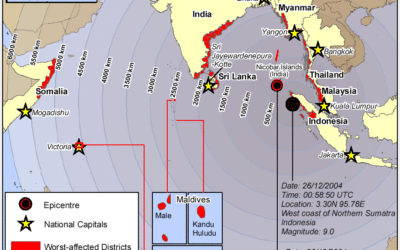
DRaaS is insurance that you don’t know you need–until you need it.
If your business relies on any type of data or digital systems – and nowadays what business doesn’t – then you are already well aware of the necessity of protecting data from malicious threats and natural disasters. This is true no matter what kind of business you have.
If you have a CRM or use ERP software, any type of disaster that occurs at your company’s data centers could leave you without access to critical information. The consequences could be disastrous, particularly at time-sensitive periods like payroll, peak sales season, or an important holiday weekend. We have real-life examples of these ill-timed events in our disaster recovery case studies. They include a manufacturer, financial services, and the critical recovery of a municipal Exchange server.
The danger to your data and ongoing proliferation of ransomware and natural disasters is very real, as are the different kinds of insider threats. While the big news stories tell about the major issues such as global malware or disastrous weather patterns, but in reality, they aren’t the most common and obvious events that can crash your systems and expose your company’s critical information. As the true story below illustrates, one careless and non-malicious employee can compromise company data unintentionally, but with a significant impact.
Before he can get the laptop back, a relieved Bob has to verify some information. That process reassured him the car company contact was legitimate and not an impersonator or bad actor. What do you think Bob did next? He went back to work and never said a word to his boss about his laptop’s missing hours – or that he had given out his personal information that could have been used to hack into it.
Bob’s laptop ended up being the source of a malware infection. The company had proprietary engineering, intellectual property, made different gadgets, and the hacker now had access to all of it.
More DRaaS Articles
Choosing Disaster Recovery Site Location
Disaster Recovery is one thing you hope you never need, but if you do, you’ll be very happy if you have right plan in place. Whether you are outsourcing your Disaster Recovery solution or keeping it in house, the steps required to implement it are somewhat complex,...
Data Backup and Disaster Recovery: A Comparison
What’s the difference between Data Backup and Disaster Recovery and how do I know which I need? What it is Data backup is a method in which your computer and network files are replicated in such a way that you can reinstall them in the event of a data loss. Data...
Predicting Natural Disasters – Earthquakes and Tsunamis
Tsunamis are arguably one of the most devastating and difficult to predict natural disasters. Evidence of this is the 2004 Indian Ocean tsunami which is considered among the deadliest in human history, credited with more than 230,000 people killed in 14 countries...
Extreme weather patterns prompt new business continuity policies
While people continue to debate the merits of global warming and its impact on their everyday lives, researchers are far more confident about the prospect of more intense heat waves, heavy downpours, earthquakes and even volcanic eruptions in our near future. But no...




0 Comments